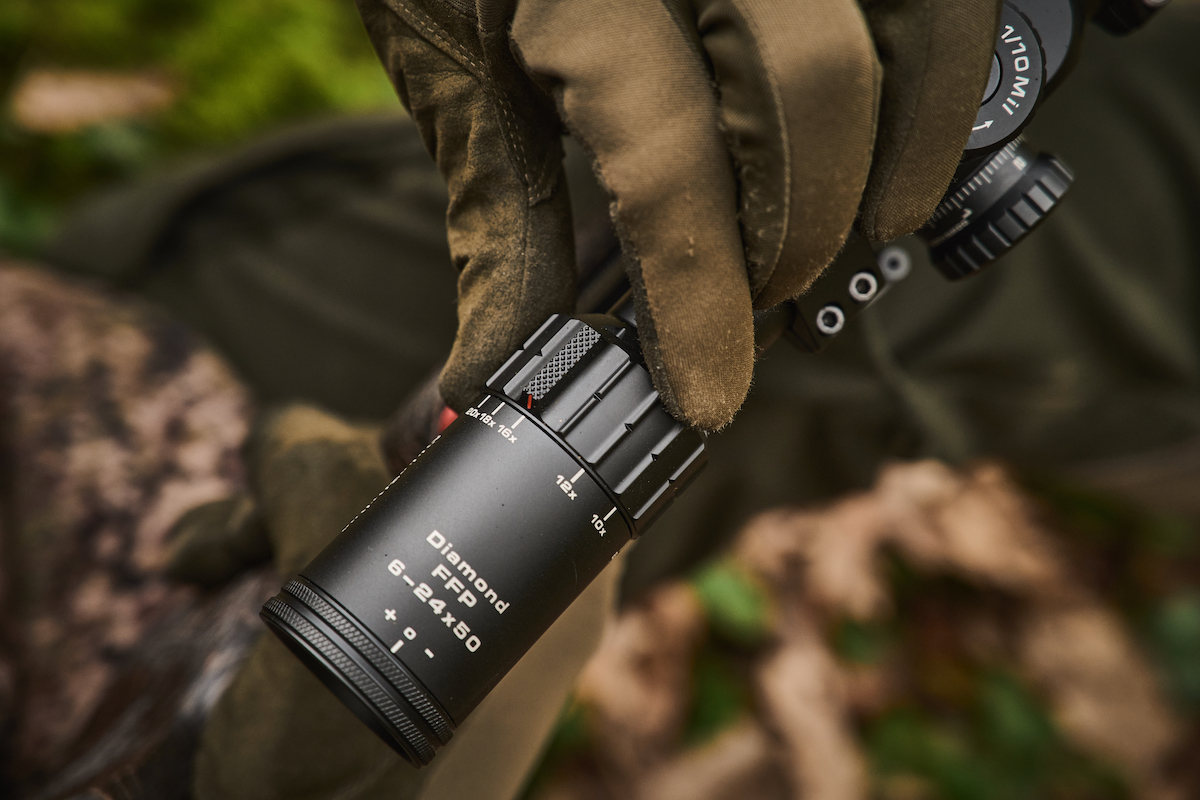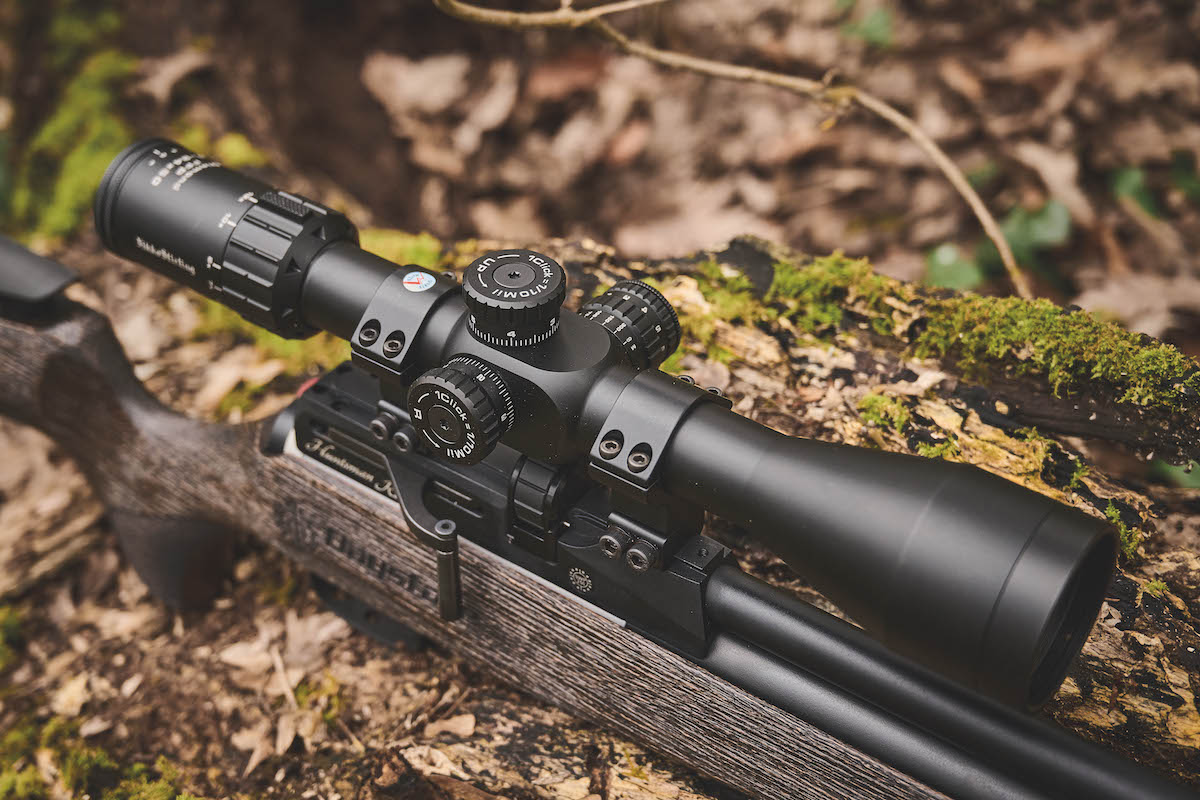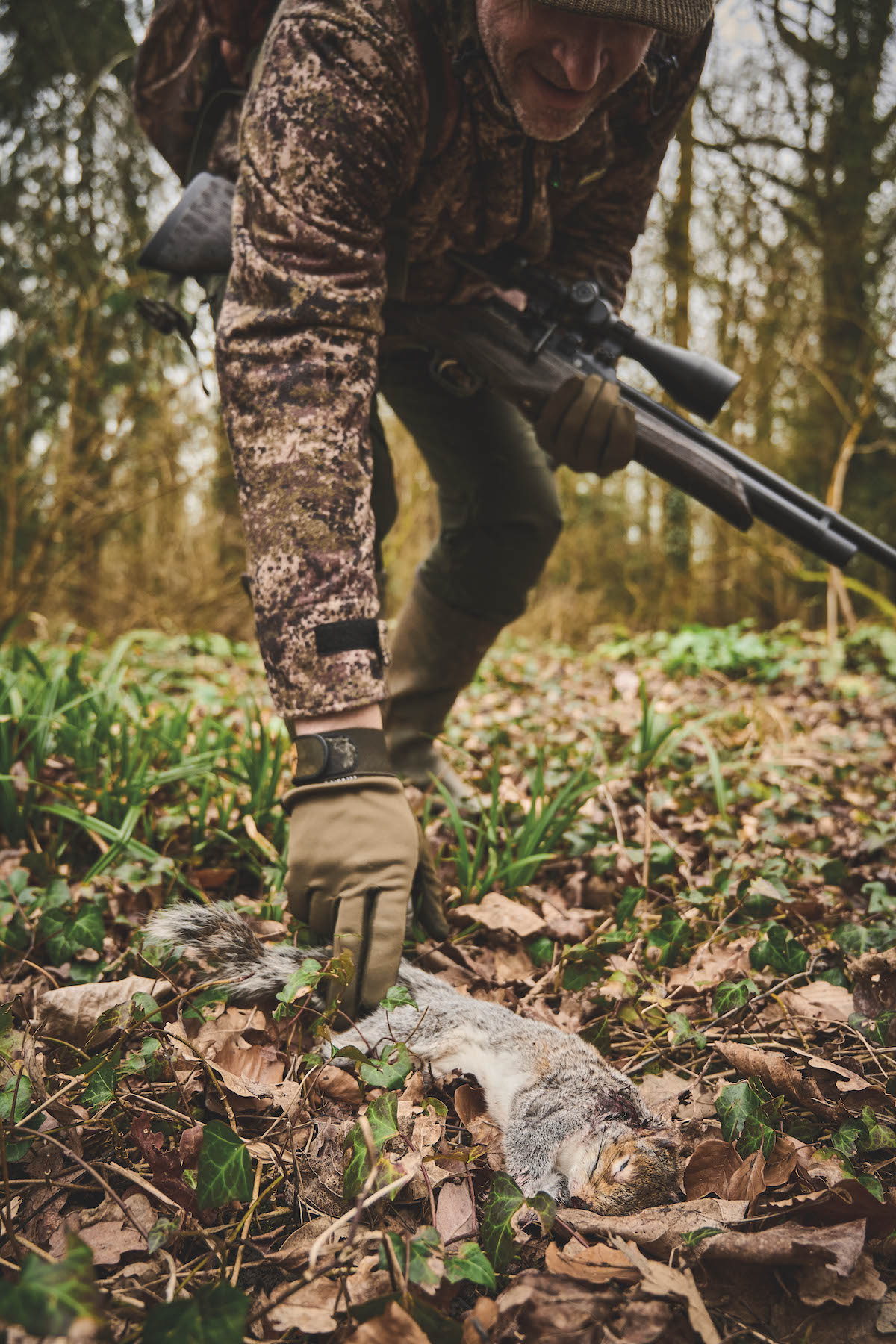News
The new Diamond FFP put to the test
Would you like to speak to our readers? We offer sponsored articles and advertising to put you in front of our audience. Find out more. Optics Review Feature Nikko Sterling Dimond
Optics Review Feature Nikko Sterling Dimond
I have a fondness for Nikko Stirling scopes as my first telescopic sight was the firm’s Silver Crown 4×40. Things have come a long way since the simple optic that adorned my beloved Webley Vulcan in 1988, so I jumped at the chance to put the current Diamond FFP model through its paces.
Retailing at £409.99, the 6-24×50 model sent to me by Highland Outdoors costs significantly more than the Nikko I bought with my pocket money in my early teens, but you get what you pay for. It still strikes me as being a scope made primarily for airgun use, although its shock-proofing should be sufficient to stand up to the recoil of a powder-burner. It certainly has a significant zoom range, which will cover everything from close-range ratting to bipod work and long-range target shooting. Its 50mm objective lens and 30mm tube combine with decent multi-coated lenses to deliver a bright sight picture that remains sharp right to the edges. Other models in the range offer a choice of specifications, including a 34mm tube option.
Weighing in at 680g before you fit mounts, and measuring 355mm from end to end, this is a substantial scope, although it still made for a balanced set-up on my Daystate Huntsman Safari air rifle. Out on the garden range, I was soon printing tight groups while getting to grips with the glass-etched HMD reticle — and I thought the Duplex crosshair on my old Silver Crown was flash.(Read more on garden airgunning.) Quickly focused via the ocular ring, the HMD comprises lots of reference points to compensate for the effect of wind and gravity without being too complicated. The reticle can also be illuminated in red with 11 stages of brightness via the dial on the outside of the left-hand turret.

The left-hand turret incorporates the parallax wheel and the dial that controls the illuminated reticle, which can be illuminated in red
Constant aim point
One of this scope’s key features is that it is a first focal plane (FFP) model. That means the reticle changes size in proportion to the target as you zoom in and out, so your aim points remain constant regardless of magnification. The zoom dial turns smoothly, and on its lowest 6x setting the reticle is still bold enough to present positive aimpoints. As you would expect, it becomes significantly thicker when cranked up to 24x but not so much as to hamper precise shot placement.
I particularly liked the Diamond FFP’s resettable windage and elevation turrets, which are large and easy to grip but not so tall as to get in the way of scope-mounted accessories. Pull them up to unlock them and they turn with clear stops, each click making 1/10 mil adjustment. Snapped back into the locked position, there’s no risk of accidentally knocking them off zero.
While range testing is all very well when setting up and familiarising yourself with a new optic, I like to reserve judgement until after a scope has been used in the field. Being tasked with the control of grey squirrels on several estates, I didn’t have to wait long for an opportunity to put the Diamond FFP to work.
My first port of call was a little spinney where a gamekeeper had told me that grey squirrels were helping themselves to the contents of his pheasant feeders. I encountered one within minutes of leaving the car, foraging on the ground about 15 yards from me. It bolted up a tree but made the mistake of looking back. I was already kneeling and readying myself when it froze, but I needed to wind down the parallax to get a clear sight picture at such close range.
Located on the inside of the left-hand turret, the Diamond FFP’s side parallax wheel focuses right down to 10 yards, making it perfect for airgun use. On the brand-new test scope, it was stiff to turn — although I have no doubt that it will free up with more use — but I soon had the squirrel in sharp relief. The crosshairs settled, I squeezed off the shot and the Nikko Stirling had passed its first real test. Incidentally, my first kill with my Silver Crown was also a grey squirrel.

The left-hand turret incorporates the parallax wheel and the dial that controls the illuminated reticle, which can be illuminated in red
Grain drain
I bagged up the squirrel and moved on towards the first feeder. My clumsy approach spooked two feeding squirrels as I closed in, and they didn’t hang around. What was apparent was that the grey menace had been doing more than pinching grain. Presumably frustrated by the slow flow of food from the coil, they had gnawed through the lid of the feeder and the top of the drum.
Spurred on by the sighting of the two offenders and the damage that they and their mates had caused, I decided to sit it out for an hour, tucking myself next to a tree about 25 yards from the feeder. One was back within minutes, and was promptly added to the tally, but I saw no further squirrelly activity before heading home for breakfast.
The Nikko Stirling Diamond FFP 6-24×50 gave an admirable account of itself on the range and in the woods. The morning of my squirrel rounds was grey and gloomy, yet it produced a bright, crisp sight picture. I was using it on 12x magnification, which I find to be a good all-rounder, though probably a bit high for that first, very close squirrel. I am pleased to see that Nikko Stirling scopes are still going strong and this model certainly makes for a good pairing with a modern precision air rifle. (Read how much should a beginner spend on an airgun scope?)

The Diamond FFP proves its worth as the first grey squirrel goes in the bag, having made the mistake of lingering for too long within range
Need to know
- Model Nikko Stirling Diamond FFP
- Price £409.99
- Contact Highland Outdoors
- Length 355mm
- Weight 680g
- Magnification 6-24x
- Objective lens 50mm
- Tube size 30mm
- Minimum parallax 9m
- Eye relief 90mm
- Field of view 6.1m to 1.5m at 100m
- Features Illuminated reticle, side parallax, waterproof, shockproof and nitrogen-purged
Also consider
MTC King Cobra 4-16×50 F2
- Price £345
- Contact MTC Optics
Similarly proportioned to the Diamond FFP, this second focal plane offering from MTC incorporates high-quality glass for exceptional viewing. Features include side parallax and illuminated reticle, and its copper-coloured embellishments ensure that it stands out from the crowd.
Konus Pro F30 FFP 6-24×52
- Price £375
This version of the Konus Pro is a large scope at 397mm, and tips the scales at a solid 770g. It’s a first focal plane model and packs a lot of features into that substantial frame, including side parallax, illuminated reticle and a light-grabbing 52mm objective lens.
Buy here
Hawke Airmax 30 SF Compact 4-16×44
- Price £339
- Contact Hawke Optics
At 295mm long and 625g in weight, the Airmax 30 SF compact is a shorter, lighter option. This second focal plane scope boasts features including illuminated AMX reticle, 16-layer coated lenses and side parallax with removable 10cm wheel. (Read our full review of the Hawke Airmax 30 here.)
Related articles
News
PETA attacks royal couple for breeding cocker pups
The Prince and Princess of Wales have faced criticism from animal rights group PETA after they had a litter of puppies
By Time Well Spent
News
Farmers launch legal review against Reeves’s farm tax
Chancellor Rachel Reeves faces a judicial review over inheritance tax reforms that could force family farms out of business
By Time Well Spent
Manage Consent
To provide the best experiences, we use technologies like cookies to store and/or access device information. Consenting to these technologies will allow us to process data such as browsing behavior or unique IDs on this site. Not consenting or withdrawing consent, may adversely affect certain features and functions.
Functional Always active
The technical storage or access is strictly necessary for the legitimate purpose of enabling the use of a specific service explicitly requested by the subscriber or user, or for the sole purpose of carrying out the transmission of a communication over an electronic communications network.
Preferences
The technical storage or access is necessary for the legitimate purpose of storing preferences that are not requested by the subscriber or user.
Statistics
The technical storage or access that is used exclusively for statistical purposes.
The technical storage or access that is used exclusively for anonymous statistical purposes. Without a subpoena, voluntary compliance on the part of your Internet Service Provider, or additional records from a third party, information stored or retrieved for this purpose alone cannot usually be used to identify you.
Marketing
The technical storage or access is required to create user profiles to send advertising, or to track the user on a website or across several websites for similar marketing purposes.





